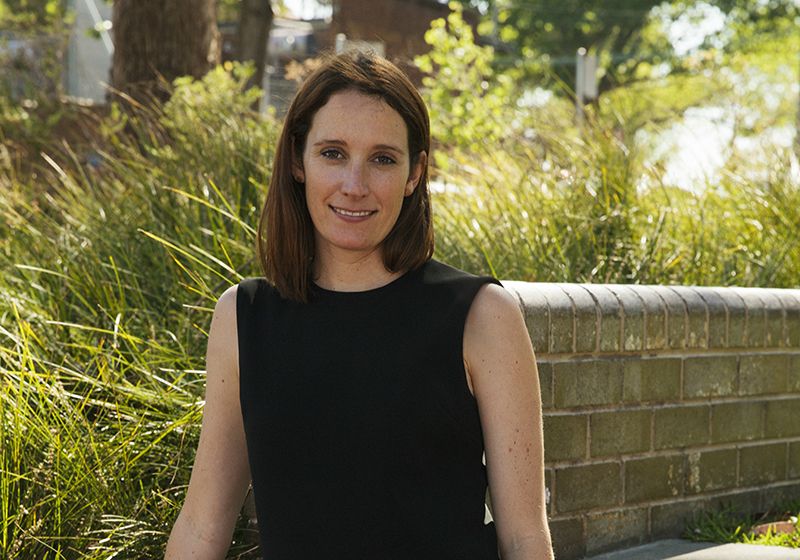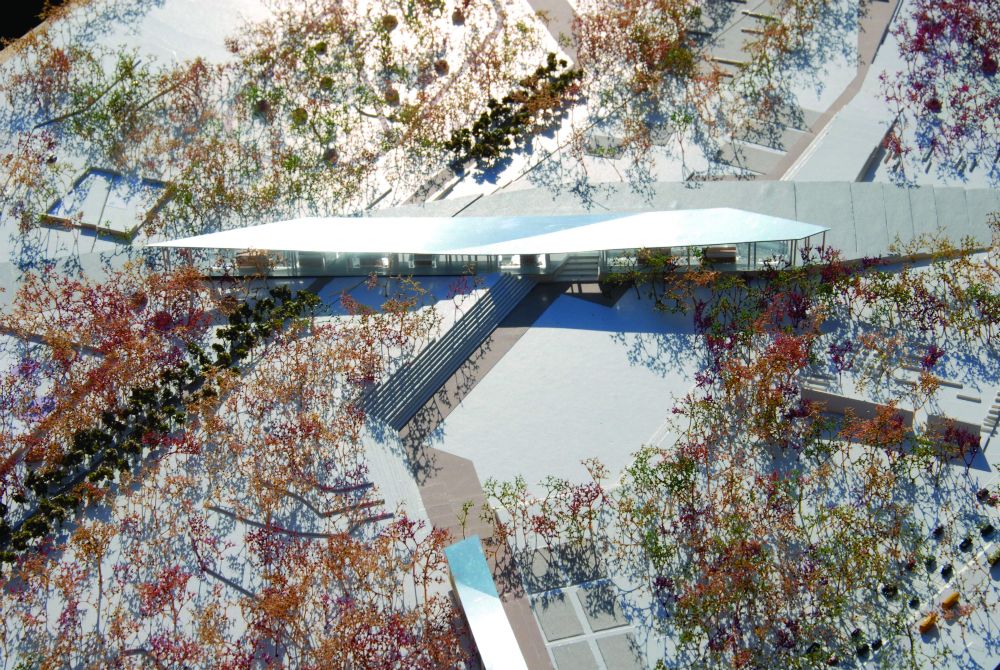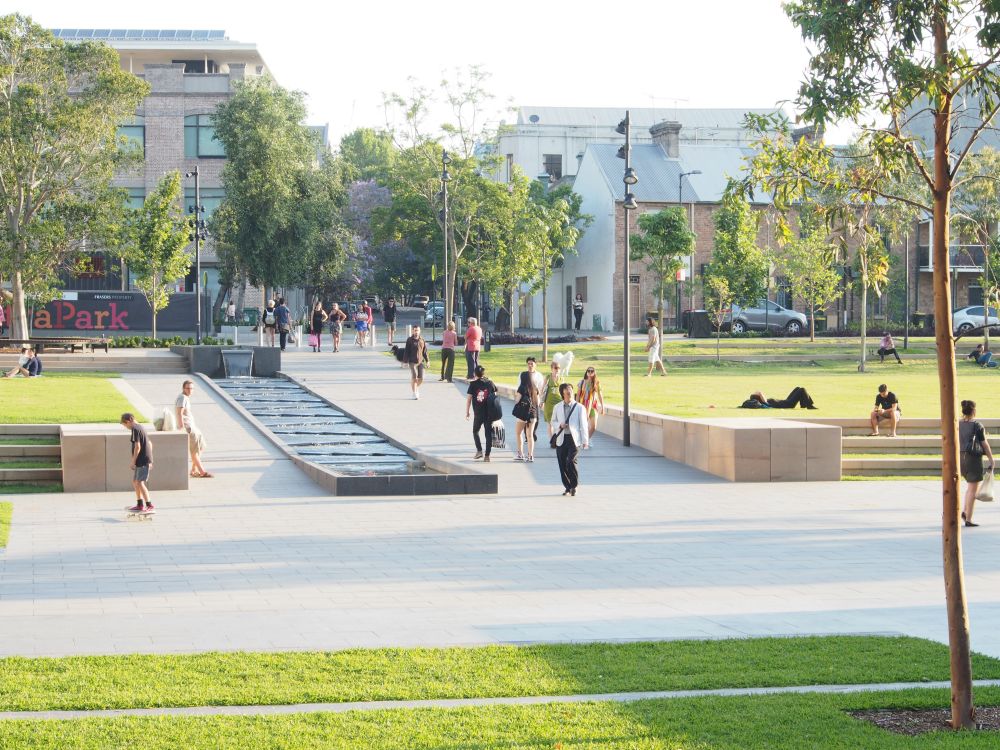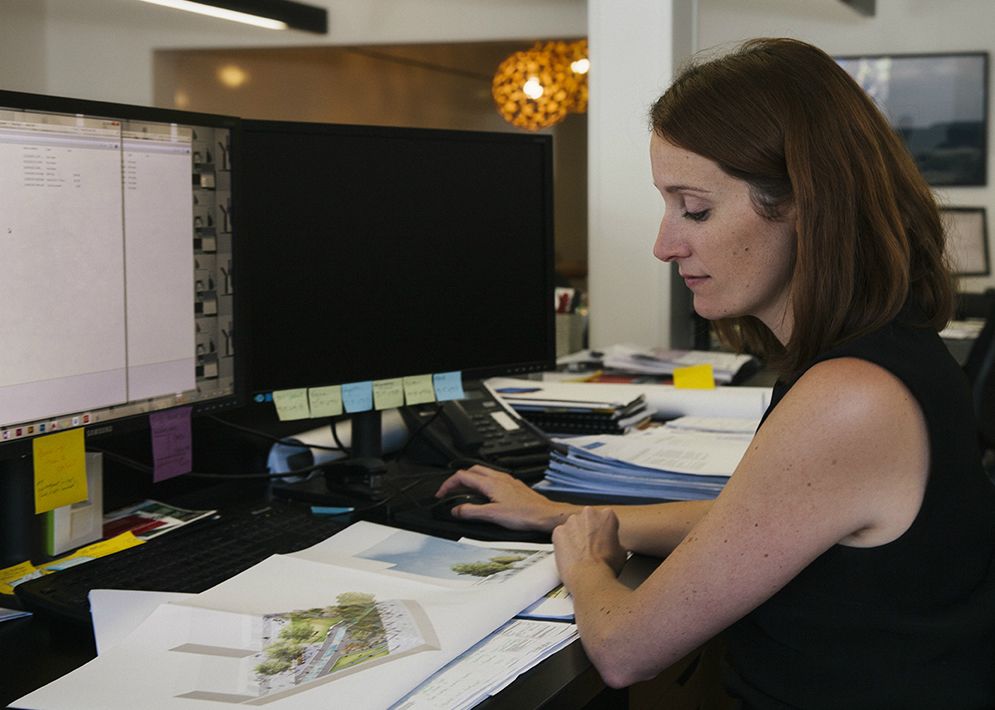
Claire Broun, senior landscape architect with JMD Design. Photo: Anna Sinclair
Well travelled: Claire Broun, senior landscape architect with JMD Design in Sydney, takes StreetChat through designing for Copenhagen and Sydney.
Tell us about yourself. What drew you to landscape architecture?
My father is a fifth generation wheat farmer and my mother an artist. I grew up in an old homestead on a property in Western Australia’s wheatbelt.
A flourishing garden surrounds the verandahs where, as a child, I would often forage for plants to dissect and draw. I realise now, looking back, that these environments, both within and beyond the garden fence, are fundamental to who I am today.
I showed talent as an artist throughout high school and was enthusiastic about continuing my interest with studies at university. This, combined with a developing interest in the land, lead me to enrolling in Landscape Management at UWA.
A second year elective sent me to the Architecture, Landscape and Visual Arts (ALVA) campus for a lecture on ‘a sense of place.’ I walked through the landscape architecture studio, full of drawing boards, and decided then and there to switch courses.
For a new graduate, how was the experience of working in Scandinavia?
Winning a scholarship upon graduating from university took me to Copenhagen for three years. My first job as a graduate, in the Scandinavian city known for its ‘livability’ was a bit of a Hans Christian Andersen fairytale–like dream.
I embraced my position, thoroughly enjoyed the Copenhagen lifestyle and took every opportunity to travel. It was an exciting time for me as a young graduate, often flying to meetings in Paris or London.
Overall, the projects I worked on varied in scale and location. Memorable projects were Aalborg’s Opera House, a 50ha park in Amman Jordan, residential developments in London and a number of competitions throughout Denmark and Europe.
Most of these projects were documented in English however the first project I worked on was for some deep-sea baths in Sweden. Like most Scandinavian interactions my boss spoke Danish and the client Swedish so I spent initial meetings focusing on differentiating the two languages.
My first job as a graduate, in the Scandinavian city known for its ‘livability’ was a bit of a Hans Christian Andersen fairytale–like dream.

Model for King Abdullah II Park, Amman Jordan. Photo: Jeppe Aagaard Andersen
How does Scandinavian design compare to Australian?
The general population of Scandinavia has a good understanding of design and importantly landscape architecture is a much more established profession there, so people are more aware of the contributions we can make.
I can only speak for one Danish firm, though there were some noticeable variations in the design approach. A great awareness of the nuances of materials and of place informed concepts, often leading to responses that would embody a classical quality, with an element of timelessness, naive to a style or trend.
The adjustment between countries was not so much in the design process, but more in the consideration of local, cultural and environmental factors.
Which Australian projects have you been working on?
I was fortunate to be involved in the early masterplan stages of Central Park, working through concept and design development from 2007 while I was in Denmark.
I then relocated to Sydney for the documentation and construction of the main park, adjacent plaza and streets, along with various other areas throughout the precinct. Like any project, seeing it come to life after so many years in the making was rewarding.
This was especially so when Balfour Street was opened up, providing a connection to the park from Broadway through to Chippendale and beyond. Seeing such large numbers of people use a space that was previously walled off to the public is really something.

Chippendale Green, Central Park. Photo: Claire Broun
What influences your designs?
I’m mostly inspired by travel. Experiencing how other cultures use space, noticing ecological differences, different plant characteristics and assessing how my own behaviour changes in response to new environments.
I love spending time in galleries, and revisiting favourites to notice details I hadn’t seen previously. I’ll never tire of places like Louisiana Museum’s sculpture garden.
The social media scroll has become my part of my commute though there’s a lot of information out there to process.
The social media scroll has become my part of my commute though there’s a lot of information out there to process.
What are you excited to be working on at the moment?
I’m currently working on Parramatta Square. JMD is part of a great lead design team consisting of TCL, TZG and Gehl Architects.
Many of the projects I’ve worked on have been collaborations, which is important in striving for a unified and integrated outcome. I find the initial stage we’re in, when everyone is throwing ideas around, an exciting part of the process.

Claire Broun, senior landscape architect with JMD Design. Photo: Anna Sinclair











